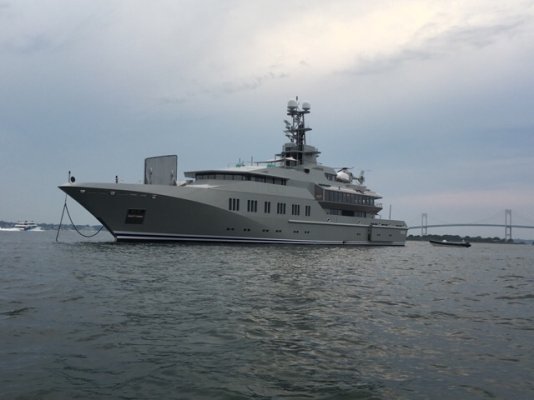I totally ignore our bow height. I'd guess it's 8-10' off the water line, but don't know for sure. And I have a tow eye, but currently don't use it.
Why?
Because none of this is an exact science. There is nothing sacred about 5:1 scope. You are not going pop loose just because you put out 4.5:1, and are not guaranteed to stay put because you put out 5.5:1.
Instead, I use less scope in deep water, and more scope in shallow water, calculated relative to depth at high water. If there is any doubt, I put out more chain. In fact, I pretty much always do just for good measure.
The reason is that all the chain in deep water anchoring is a LOT of weight, and except in extreme conditions, the catenary geometry does a superb job of maintaining a low pull angle on the anchor. In shallower water, there is less chain weight and you are relying more on the scope geometry rather than the catenary geometry. So more scope is required. But it's all freakin' guess work, so calculating to the last decimal point isn't really useful.
In deep water, the difference in calculated scope with vs without your bow height becomes small. 3:1 in 100' of water is 300' of chain. Including the bow height it becomes 2.7:1. If I felt I needed 300' of chain, I'd put out another 50' for good measure. Now I'm at 3.2:1, considering my bow height. So when in doubt, let out a little more chain and don't worry about it.
Now say, I'm in 20' of water. In that case I'd be looking for 5:1 or more scope. So I'd put out 100' of chain. Counting my bow, that's only 3.3:1. 100' of chain isn't much, so I'd put out another 25-50' regardless. If that brought me too close to other boats, I probably wouldn't be in there in the first place. Now I'm back up in the 4:1 to 5:1 range.
So I guess my point is two fold:
First, this is all guess work, and if you just round up and err on the side of more chain rather than less, it all works out in the wash. Putting out another 50' of chain is a good substitute for a lot of calculations.
Second, it definitely IS TRUE that a lower attach point is better than a higher attach point, but you need to consider it's significance in the grand scheme of things. There are a lot of hairs to split, and a lot of sights to see. Which would you rather do when cruising?



